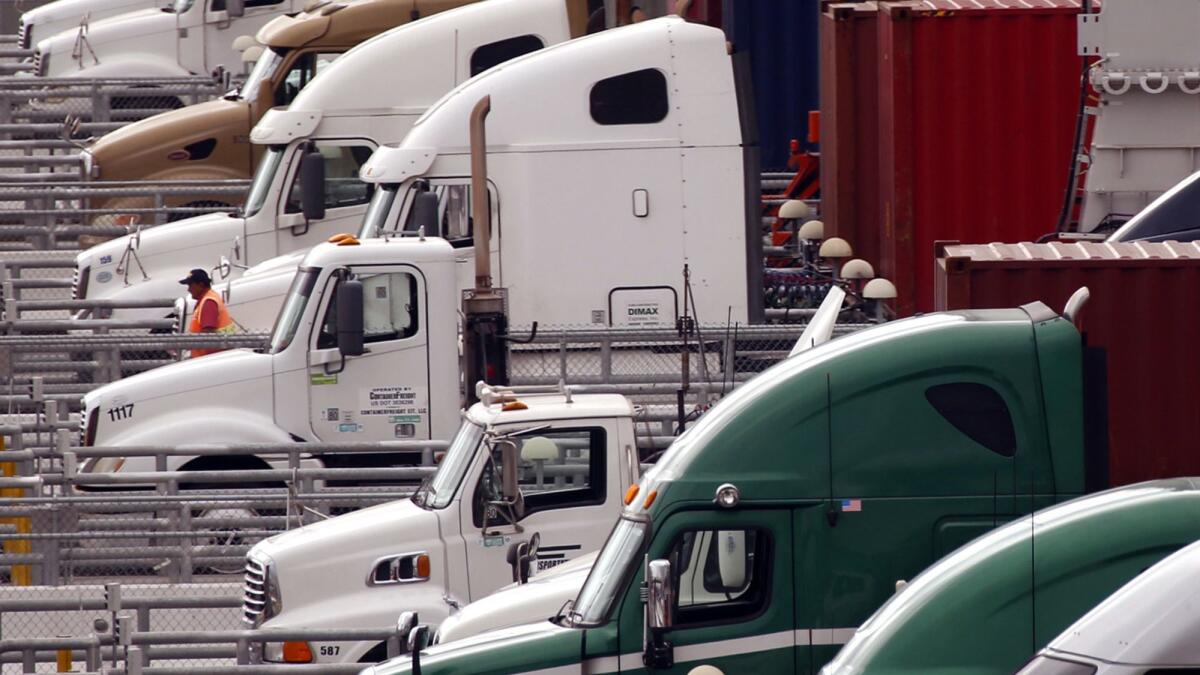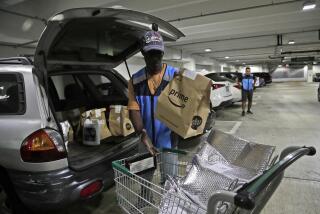Share of Americans working as independent contractors dips, government data show

- Share via
The share of Americans working as independent contractors has declined since 2005, according to new data out Thursday from the Bureau of Labor Statistics.
The report, the first by the agency since 2005, contradicts other recent studies that find the American worker is becoming less bound by the traditional employee-employer relationship. But it also found that the number of independent contractors has grown even as the share has declined.
Proponents of independent contracting say it provides greater flexibility for workers and lower costs for employers. But others note it has ensnared people in low-wage jobs without benefits or predictable schedules.
Much of the attention on alternative work relationships in recent years has focused on the rise of the app-driven gig economy in which consumers can summon an independent contractor through their phones to drive them around or clean their house.
The bureau’s report does not estimate the size of the so-called gig economy. In its May 2017 survey, the bureau did ask questions to gauge how many people found jobs through a mobile app and were then paid by that app. Those numbers are expected to be released later.
Instead, the data focused on a broader category of workers categorized as the contingent and alternative workforce, which would include gig workers, independent truck drivers and contract workers who lift boxes at warehouses.
Contingent workers are defined specifically as people who do not expect their current job to last for long and can include wage and salary workers. Alternative work relationships include independent contractors, on-call workers and those provided by temp agencies or contract firms.
Using different estimates, the share of contingent workers was between 1.3% and 3.8% in May 2017, the bureau said. That’s down from 1.8% to 4.1% in February 2005.
Independent contractors — by far the largest form of alternative work and a category that includes Uber and Lyft drivers — were estimated to make up 6.9% of total employment in May 2017, down from 7.4% in February 2005.
The other forms of alternative work were little changed, the bureau said in a news release.
The bureau only counts contingent or alternative jobs if workers hold those jobs as their sole or primary means of employment, which leaves out many workers who drive for Uber and Lyft on the side.
Though the share of independent contractors has declined, the overall number of those workers has increased, according to the data. In May 2017, 10.6 million people were employed as independent contractors, up from 10.3 million in February 2005. The number of on-call workers and those provided by temp agencies and contract firms also rose slightly.
Other studies have shown an increase in the share as well.
Lawrence Katz of Harvard University and Alan Krueger of Princeton University released a study two years ago that found 8.4% of workers in 2015 were working as independent contractors for their primary job, up from 6.9% in 2005.
Internal Revenue Service data also back up the conclusion, showing a rising share of people who are independent contractors and have no W-2 income, Katz previously told The Times.
It’s possible seasonality could be affecting the bureau results since the 2005 survey was taken in February and the 2017 survey was taken in May. However, Katz and Krueger compared February 2005 data with October and November 2015 data and found “no evidence of systematic seasonality between February and October or November in the share of workers who are self-employed.”
In recent years, independent contracting has drawn increased scrutiny from labor activists and the courts. They have questioned whether companies are simply misclassifying people as independent workers — allowing them to not pay benefits or contribute to worker’s compensation funding — but retaining effective control over a worker’s day.
In April, the California Supreme Court issued a major ruling that agreed with that argument and laid out new rules that make it more difficult for companies to classify workers as independent contractors.
Follow me @khouriandrew on Twitter
More to Read
Inside the business of entertainment
The Wide Shot brings you news, analysis and insights on everything from streaming wars to production — and what it all means for the future.
You may occasionally receive promotional content from the Los Angeles Times.











